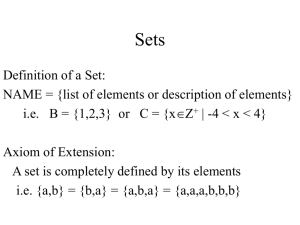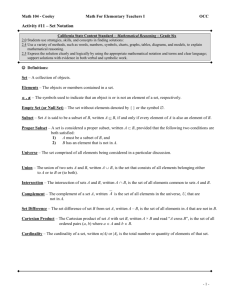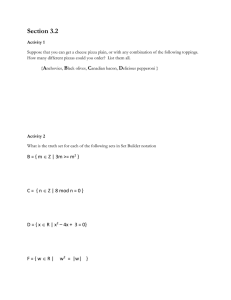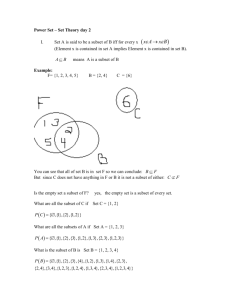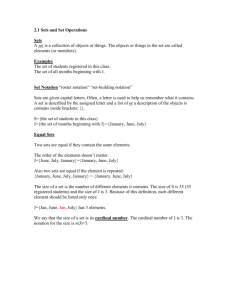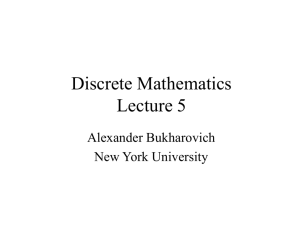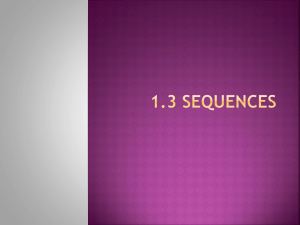Section 6
advertisement
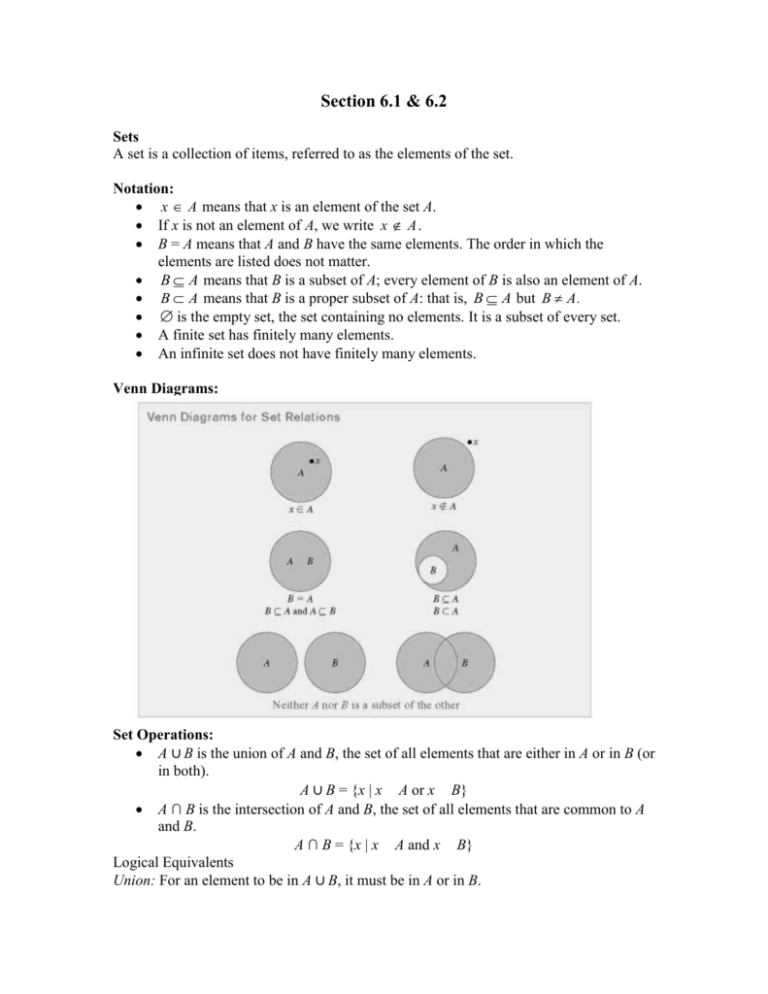
Section 6.1 & 6.2
Sets
A set is a collection of items, referred to as the elements of the set.
Notation:
x A means that x is an element of the set A.
If x is not an element of A, we write x A .
B = A means that A and B have the same elements. The order in which the
elements are listed does not matter.
B A means that B is a subset of A; every element of B is also an element of A.
B A means that B is a proper subset of A: that is, B A but B A .
is the empty set, the set containing no elements. It is a subset of every set.
A finite set has finitely many elements.
An infinite set does not have finitely many elements.
Venn Diagrams:
Set Operations:
A ∪ B is the union of A and B, the set of all elements that are either in A or in B (or
in both).
A ∪ B = {x | x A or x B}
A ∩ B is the intersection of A and B, the set of all elements that are common to A
and B.
A ∩ B = {x | x A and x B}
Logical Equivalents
Union: For an element to be in A ∪ B, it must be in A or in B.
Intersection: For an element to be in A ∩ B, it must be in A and in B.
Universal Set:
The set S of all objects under consideration, or the universe of discourse, is generally call
the universal set for the discussion.
Complement:
If U is the universal set and A ⊆ U, then the complement of A (in S), denoted by A c or A’,
is the set of all elements of S not in A.
A c or A’ = {x S | x A }
Logical Equivalent
For an element to be in A’ or A c , it must be in S but not in A.
Cartesian Product:
The Cartesian product
of two sets, A and B, is the set of all ordered pairs (a, b) with a A
and b B.
A B = {(a, b) | a A and b B}
In words, A B is the set of all ordered pairs whose first component is in A and whose
second component is in B.
Cardinality:
If A is a finite set, then its cardinality is
n(A) = number of elements in A
Cardinality of a Union:
If A and B are finite sets, then
n(A ∪ B) = n(A) + n(B) − n(A ∩ B)
In particular, if A and B are disjoint (meaning that A ∩ B = ), then
n(A ∪ B) = n(A) + n(B)
(When A and B are disjoint we say that A ∪ B is a disjoint union.)
Cardinality of a Complement:
If S is a finite universal set and A is a subset of S, then
n( A c ) = n(S) − n(A)
and
n(A) = n(S) − n( A c )


